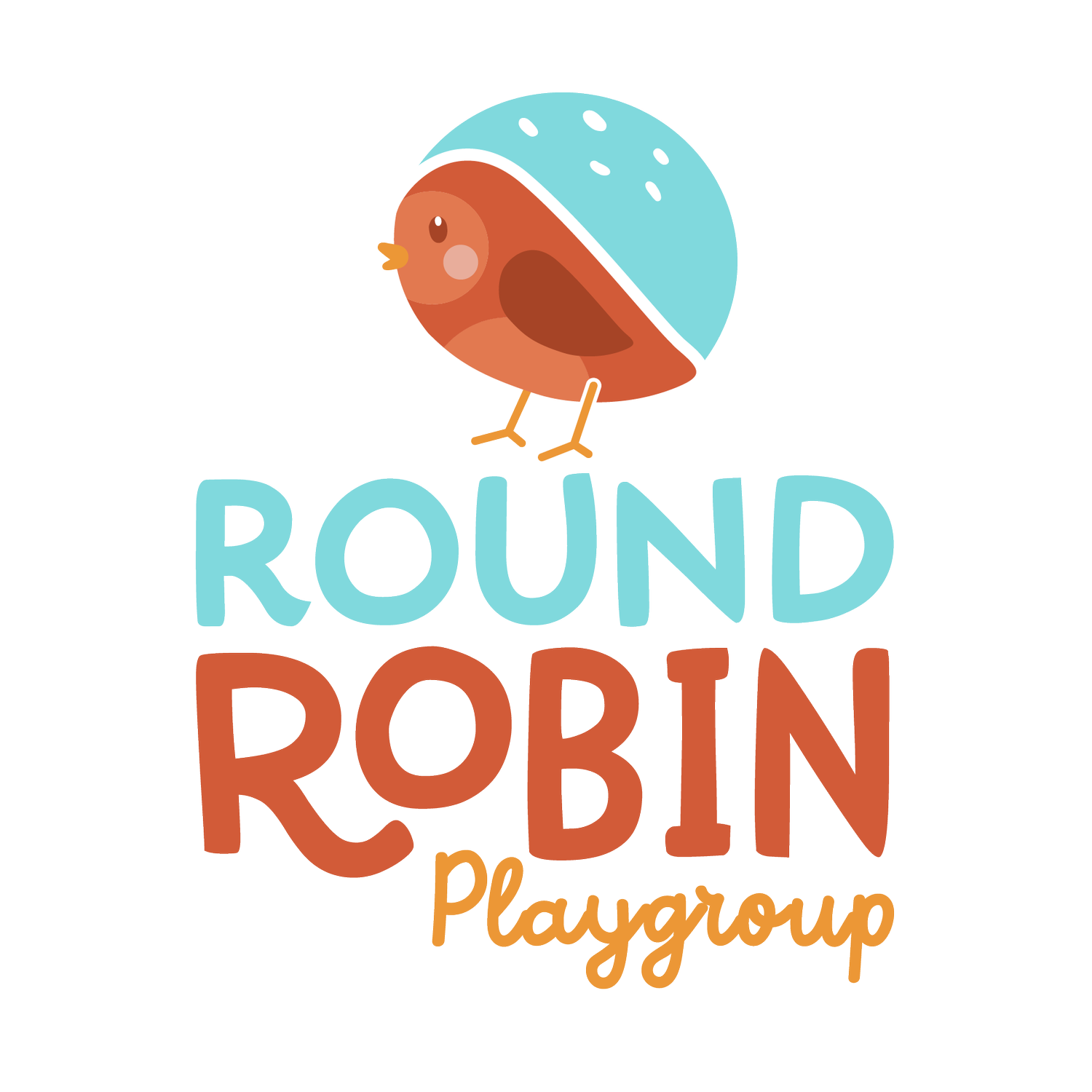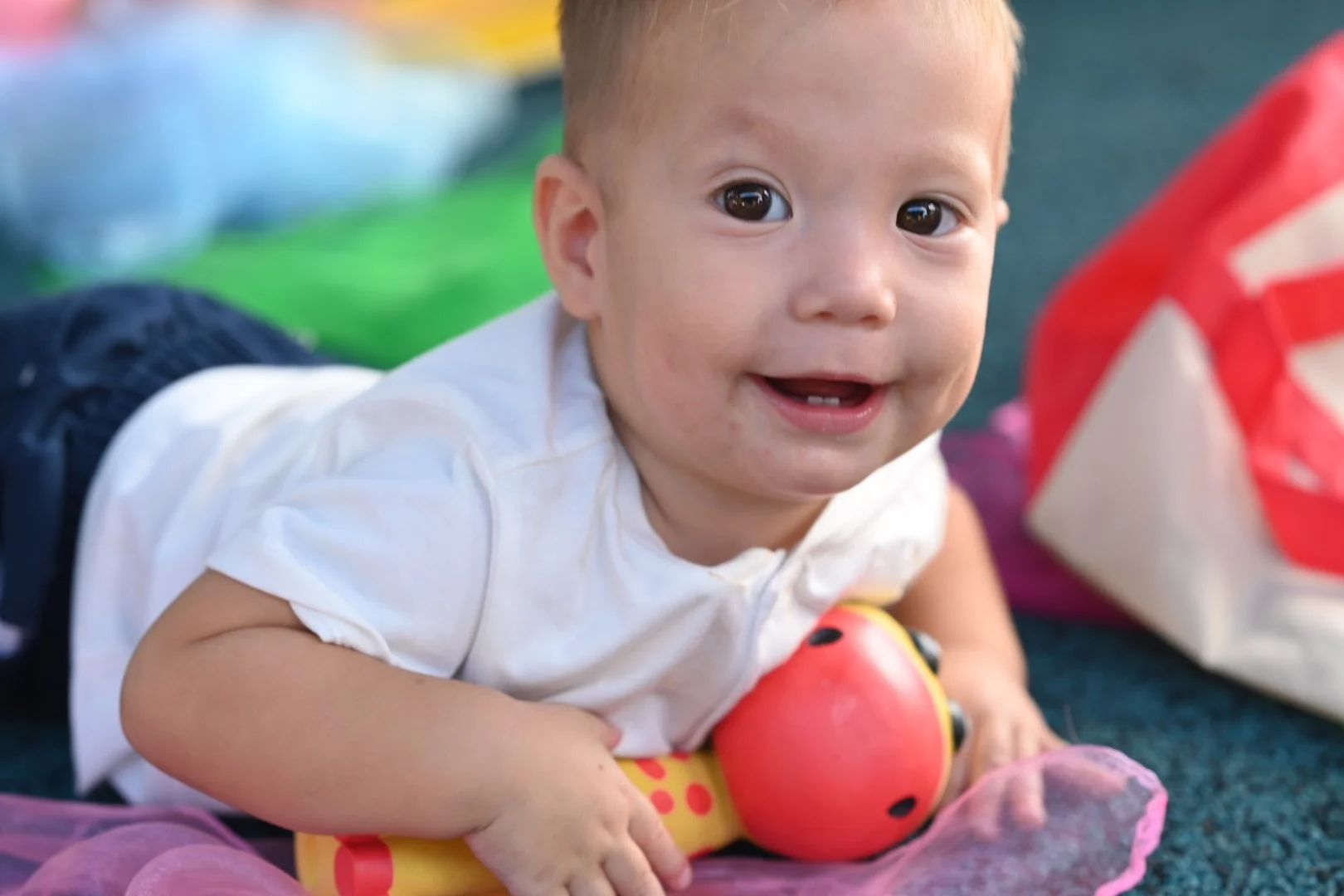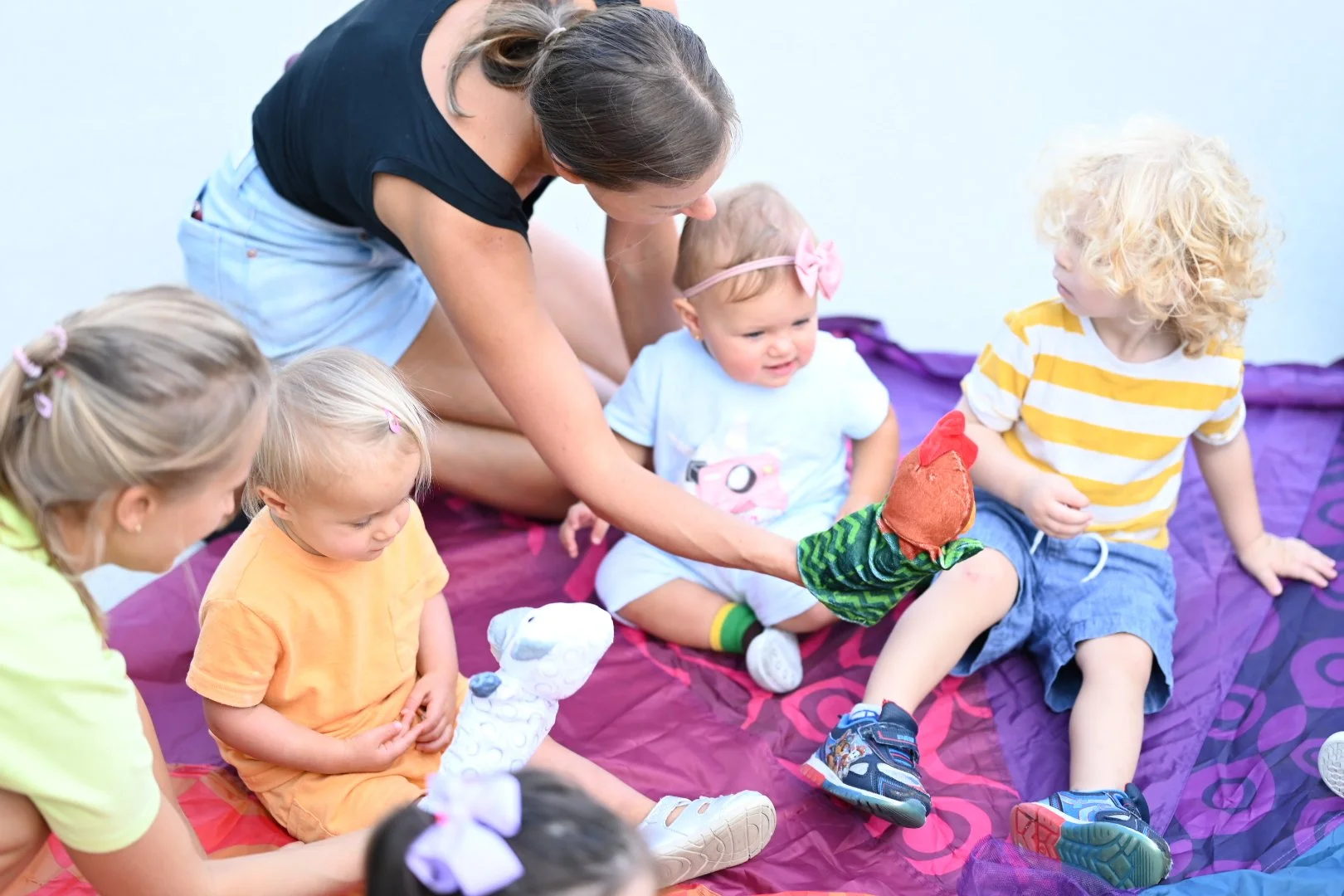ROBIN’S WINGS© Philosophy & Practice
Warm Interactions Nurturing Growth & Skills
ROBIN’S WINGS© strengthens secure attachments and warm relationships through bonding activities and educational resources enhancing Caregivers' awareness about developmentally appropriate expectations.
Our Playgroups have a warm, inclusive, welcoming atmosphere. Our philosophy creates a supportive network of individuals who share similar experiences and genuine understanding, and who are committed to enhancing their children’s early years.
Our Operating Value is Child Honoring
(Warm Interactions)
“Respectful Love is key. It speaks to the need to respect children as whole people and to encourage them to know their own voices. Children need the kind of love that sees them as legitimate beings, persons in their own right. Respectful love instills self-worth; it’s the prime nutrient in human development. Children need this not only from parents and caregivers, but from the whole community... Emotional Intelligence sums up what early life is about: a time for exploring emotions in a safe setting, learning about feelings and how to express them. Those who feel loved are most able to learn and to show compassion for others.”
Our operating principle is Developmentally Appropriate Practice 'DAP'
(Nurturing Growth)
“Methods that promote each child’s optimal development and learning through a strengths-based, play-based approach to joyful, engaged learning... Developmentally appropriate practice recognizes and supports each individual as a valued member of the learning community. As a result, to be developmentally appropriate, practices must also be culturally, linguistically, and ability appropriate for each child.”
Weekly Program Overview
Playgroups have a weekly itinerary following the same routine. Providing repeated positive experiences strengthens connections and is critical for children’s brains to become highly developed.
Independent Play (Skills) & Socialization
Each Playgroup begins with an independent play + socialization period. The Playgroup Leader will greet Caregivers individually and everyone will have the opportunity to meet one another and socialize. Independent play helps children learn and develop imagination, language, and cognitive skills. Independent play also helps kids become more independent and learn social and emotional skills like empathy, self-control, and problem-solving.
Independent Play & Toys
Simple Toys (not battery operated). As many times the loud colorful toys that we give our children for entertainment only overstimulate them and cause irritability, select toys that require the child’s interactions. children should be able to explore, and use their own will to manipulate their toys and learn how their interactions haveaffects. Toys like blocks and dolls give Hatchlings freedom to explore as they present limitless possibilities.
We think of "toys" in a broader way – Hatchling can find fun playing with almost anything from daily life (banging pots and pans, sorting objects into basket...etc.)
We give time, space, and materials for different kinds of play so Hatchlings can explore and find the activities that they find most interesting (wooden puzzles, soft puppets... etc.)
RRP will not provide toys with small pieces as they could become choking hazards.
Huge selections of toys can be overwhelming. Limited choices make it easier for Hatchlings to focus on & enjoy their toy .
2. Clean Up (Nurturing Growth)
After approximately 15 minutes it will be time to begin the formal program. Caregivers and older Hatchlings can model collaborative work and the importance of taking care of our environment while cleaning up, while younger Hatchlings can participate to the best of their ability with the guidance of their Caregiver. Lots of positive attention is given to our ‘helpers.’ Cleaning up gives Hatchlings a sense of responsibility and pride. Not only are they loved, they are also needed.
3. Welcome (Warm Interactions)
The playgroup leader will greet Caregivers and Hatchlings with our lively ‘Hello Song’, and will dance and sing with a Robin finger puppet. This sets the warm and playful atmosphere.
4. Bonding Exercise (Warm Interactions)
The Robin will lead a short bonding exercise for each Caregiver to do with their Hatchling. The bonding exercise can include:
Silly Stretches or Yoga - Physical activity is a great way to unwind and relax while keeping it playful
Cuddling, Holding and Rocking
Facial Mimicking - Try sticking tongues out, or making funny noises. These games help Hatchlings learn basic language skills and social-emotional understanding
Peek-A-Boo - Hatchlings are discovering that when an object moves out of sight, it hasn't disappeared. Caregivers can hide their face or stuffed animals
5. Guided Enrichment Activity (Skills)
The Robin leads the 25 minute activity while providing explanations on how the activity benefits early development
6. Goodbye
(Warm Interactions)
Caregivers and their Hatchlings sing, cuddle and snuggle during our group's 'Goodbye Song.'
7. Stay-A-While
(Warm Interactions + Nurturing Growth)
Toys and books are re-introduced for another 15 minute free-play session.
A Closer Look at Developmental Skill Building through Guided Play-Based Enrichment
Engages the curiosity and interest of youngsters ages 0-2 (Hatchlings). Engagement is essential to learning. When children are deeply immersed in something, they let their natural curiosity lead them.
Guides Caregivers to become attuned and active participants in the activities. When Caregivers joins their Hatchlings in play, it tells Hatchlings that their Caregivers are fully paying attention to them, which helps the creation of secure attachments.
Introduces Hatchlings to new experiences, thus providing opportunities to create new ‘brain files,’ which boost curiosity, creativity, and eagerness to learn new skills.
Intentionally aids Hatchling’s development and skill building and instills a sense of confidence. RRP provides the opportunity and resources for Hatchlings to learn about the world around them, express their feelings, identify others' emotions, practice problem-solving, improve fine & gross motor skills, and much more.
Cognitive: The power to solve a problem. Play builds executive function skills, content knowledge, and creative thinking.
Speech & Language: The ability to understand and communicate with others.
Social & Emotional: How to interact with others. Playing with others means learning social cues, listening, and taking another person’s perspective, which helps develop empathy. Hatchlings learn self-regulation as they follow social norms and pay attention while experiencing feelings like frustration and excitement.
Motor/ Physical: Muscles have to develop in order to allow proper movements. Hatchlings develop muscle strength, muscle control, coordination, balance, and reflexes (Gross & Fine motor Skills)
Art
-
Hatchlings are born with the innate desire to create. The greatest value is the process of creating – exploring, discovering, and experimenting. Hatchlings should not focus on an end result, or focus on 'finishing' a project as this can limit the type of learning that could occur. Art projects should be open-ended so that children can become fully engaged in their experience and have the freedom to explore and apply the materials as they wish. RRP is an environment where it is safe to experiment and create. Art materials are safe and non-toxic.
-
Cognitive: Children learn about shapes, lines, & colors. Creativity strengthens problem-solving skills. Art promotes neural connections as it is an activity that can employ all the senses––sight, sound, touch, smell, and taste.
Language: As children describe their artistic process, they develop language skills. Caregivers can encourage this by asking open ended questions about the story behind the artwork: “How did you make it?” What is it all about?” “What do you really like about it?” For younger Hatchlings, Caregivers can name colors, mixing, lines (straight, curvy, wavy), and shapes, or fast and slow strokes. Caregivers can also write down what their Hatchling says about their artwork. This demonstrates respect for their Hatchling’s thinking.
Social & Emotional: Art provides a safe outlet for emotions. Movement, image, color, line, and imagination all help children express themselves in non verbal manner. Caregivers can demonstrate how they value their Hatchling’s self-expression by displaying their artwork.
Physical: Improve Fine Motor Skills. Hatchlings are improving control of the small muscles in their hands during arts & crafts. Hatchlings learn how to hold a paintbrush/ crayon, thread materials onto string, squeeze glue… etc. This is the precursor to writing: although all of our Hatchlings begin by scribbling randomly, the more they practice, the better they are able to control the movements of their writing utensil. Art activities also allow Hatchling to experience their sense of touch: they need to get used to new textures, like slimy or sticky.
Music
-
Music involves activities such as singing, rhyming songs, finger rhymes, action rhymes, listening to music, exposing children to different kinds of instruments, musical games and stories with music. We will explore sounds, rhythm, repetition.
-
Cognitive: Music builds Auditory Perception (the brain’s ability to make sense of what it hears through the ears). This is a critical skill pre-reading. Action rhymes teach children listening skills as they need to pay attention to the words in order to follow the actions. Music can promote memory and recall. Counting during musical activities is a wonderful introduction to math concepts
Language: Song lyrics, especially rhyming lyrics promote literacy in youngsters.
Social & Emotional: Hatchlings can experiment with musical instruments and can collaborate with their peers in creating different types of sounds (loud, quiet, fast, slow). RRP also includes songs from various cultures in various languages, and provides validation of the family’s culture and heritage.
Music can also be good for helping Hatchlings understand and work through emotions. Music can be soothing, relaxing or invigorating. Singing a lullaby while rocking your Hatchling back and forth promotes attachment and teaches practical self-regulation; The experience of being soothed also helps Hatchlings learn to soothe themselves. Singing about feelings helps Hatchlings learn the words to describe their emotional experiences, and music evokes feelings—even when there are no words. Even our littlest Hatchlings can sense the difference between happy and sad music.
Physical: Fine motor development (strengthening small muscles) is strengthened through finger plays, and playing small instruments.
Creative Movement
-
Children can explore and understand their emotions, their body and their environment. Creative movement can include walking, balancing, jumping, spinning, twisting, rolling, balancing, galloping, stamping, swaying and hopping in response to music.
-
Cognitive: Dancing encourages spatial awareness. Hatchlings learn their relationship to space and the objects around them. Dancing can also boost concentration and memory.
Social & Emotional: Hatchlings can express themselves through different movements. Different genres can create different feelings and emotions, and can encourage Hatchlings to move freely expressing themselves more openly. Our youngest Hatchlings also can join in as their bodies can respond to what they hear in different ways; facial expressions and body movements can be used to communicate meaning in a non-verbal way.
Physical: Creative movement builds Gross Motor Skills, and improves Bilateral coordination (the ability to use both sides of the body together, and requires both sides of the brain to communicate to coordinate the body’s movements.) Hatchlings also develop their sense of balance.
Moving different parts of a baby’s body and encouraging toddlers to move their own bodies helps them build body awareness and learn that these body parts belong to them and they can learn to exercise control of their movements.
Storytime
-
Having tangible characters to interact with may increase a child's interest in a story. We use small collections of props to bring the story to life (aka a story-bag). Some props could include toy animals, finger and hand puppets, figurines, Farm/zoo animals or elements from nature.
We select books appropriate to the age group
We read with expression! When our Robin's read, they are encouraged to make their voice higher or lower where it's appropriate, or use different voices for different characters, and to make funny sounds to show that reading is fun.
We stop once in a while and ask questions or make comments on the pictures or text. Although many Hatchlings will not be old enough to respond, it introduces critical thinking for when they are able to respond.
-
Language: Hatchlings might not follow the story or understand the words, but they are learning about language just by listening to the reader’s voice. During story-time, Caregivers are encouraged to snuggle with their Hatchlings as brains develop best in a reassuring environment with people they love.
Social & Emotional: Looking at pictures and hearing the reader’s tone and expressions helps Hatchlings recognize feelings and develop empathy. Reading aloud can strengthen the emotional bonds between Caregivers and Hatchlings. Cuddling while you read helps your baby feel safe and connected to you.
Dramatic Play
-
We set up an environment with props and assign jobs or roles that Caregivers can act out with their Hatchling. Ex. Veterinarians office (stuffed animals, buckets with water, bubbles, stethoscopes), beach (beach balls, beach chairs, sunglasses), or an ice-cream shop (bowls, spoons, paper cones).
We create dramatic activities that call for collaboration – ‘cook a meal’ as each Hatchling adds items to a pot and helps mix. Or ‘go food shopping’ and gather food items from around the room.
-
Social & Emotional: Hatchlings use dramatic activities to copy what they’ve seen others do and understand how the world works. Dramatic play gives children an emotional outlet: Children cope with difficult events by acting them out. Through dramatic activities, toddlers can make sense of their own life experiences.
When children act out other roles, they can see the world from someone else’s point of view, learn conflict resolution, and creative problem solving, which helps to build empathy.
Learn more from resources that align with our program’s values












